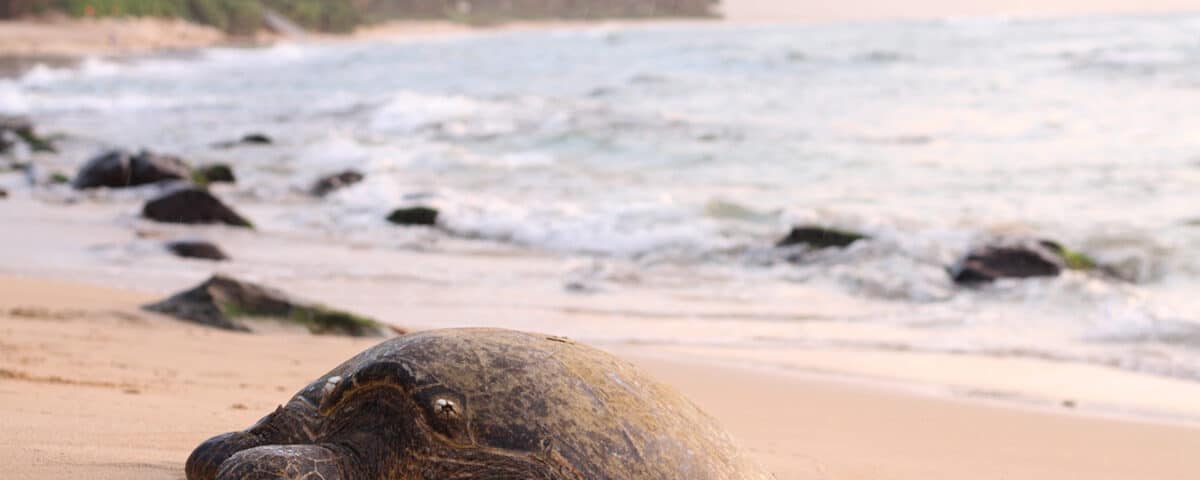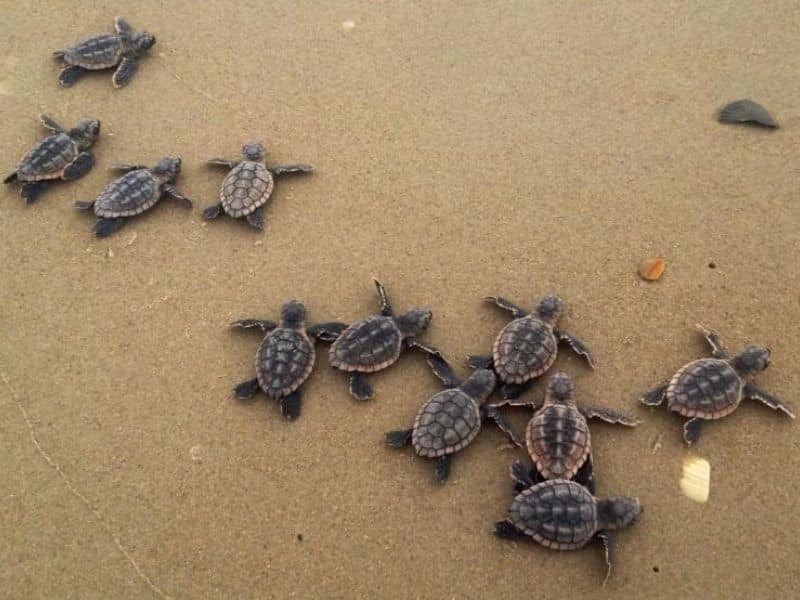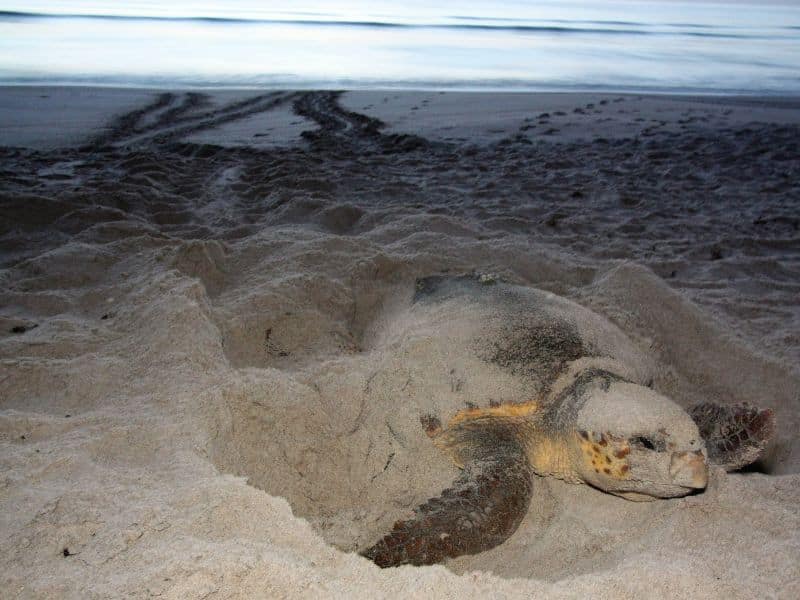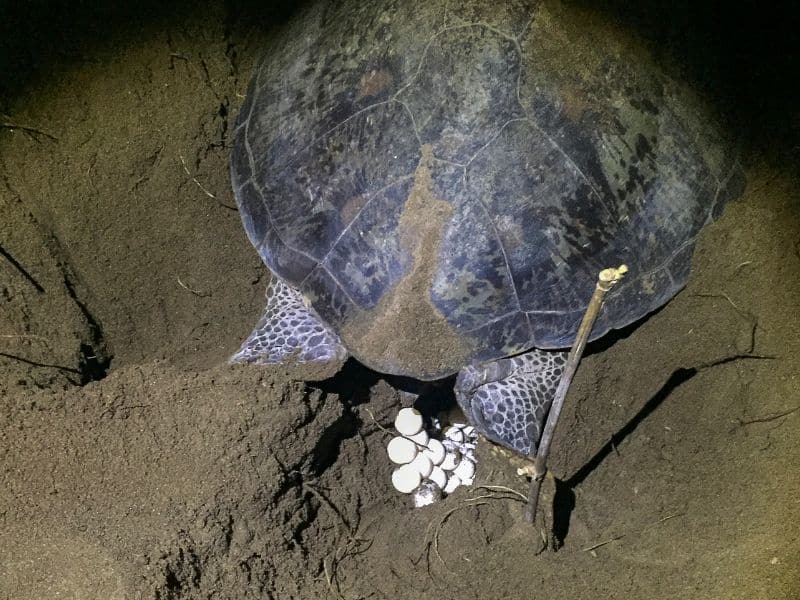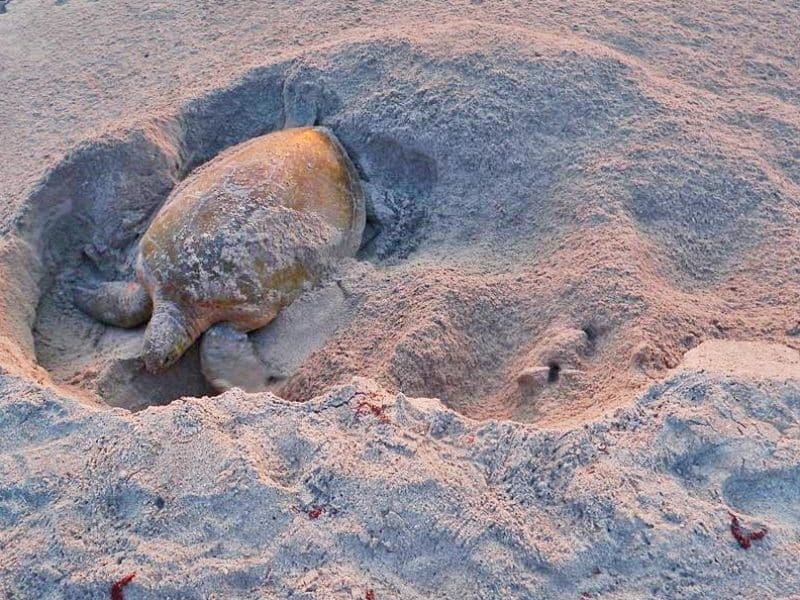3. Marine Turtle Species and Their Nesting Habits
Let’s explore sea turtle nesting habits, focusing on the intriguing loggerhead, hawksbill, and green turtles.
Loggerhead Turtle: Smarter Than You Think Under the silver glow of the moon in Puerto Aventuras, a female loggerhead turtle drags her body across the sand, leaving a trail of zigzag grooves behind her. This isn’t just a stroll; it’s a mission.
After finding the perfect spot, she begins digging a nest with her powerful flippers. In her heart, she knows she’s creating a safe haven for her future offspring. She lays between 65 and 180 eggs in a single clutch, then covers them with sand before slipping back into the ocean, leaving them to incubate in the warmth of the earth. Loggerhead nests are true hidden treasures! During a sea turtle nesting season females can lay between 3 and 7 clutches, with about 10 to 15 days between each.
After 60 exciting days, the hatchlings emerge. They wait for darkness to make a dash for the shining waves, dodging hungry predators lurking in the shadows. It’s a perilous race, and only a few will survive to adulthood.
Green Turtle: The Gentle Herbivore Can you imagine it? A female green turtle returns to nest on the very same beach where she was born. This remarkable journey, called natal homing, is repeated every two to three years. After traveling vast distances, she’s back home, ready to fulfill her destiny.
With the sun setting, she makes her way across the soft sand, her flippers ready to dig. Each movement carves out a space for her clutch. Depending on her mood, she may lay between 75 and 200 eggs at once, returning to the ocean after covering her nest. Nesting at night isn’t just a whim; it’s a smart survival tactic, minimizing the risks of overheating and predator attacks.
Every few years, she repeats this cycle, averaging about 3.6 clutches. Imagine the excitement in the air when the hatchlings emerge 60 days later, racing for the same precious prize: the sea!
Hawksbill Turtle: Nesting Without Losing Elegance Every hawksbill turtle nesting season arrives with its colorful shell and graceful presence. No wonder it’s one of the most prized treasures of our oceans.
Hawksbill turtles also undertake epic journeys, but their nesting season remains a mystery. Depending on the coast, they may nest between April and October, seeking out secluded beaches to lay their eggs. During this time, females emerge from the water, and you can feel the tension in the air. Will they manage to create a safe nest?
When they reach the shore, they engage in an ancient ritual. Using their flippers, they dig a hole in the sand where they deposit between 140 and 200 eggs. They do this with surprising delicacy, covering the nest with sand when finished—a true act of love and hope. Afterward, they return to the ocean, leaving nature to work its magic.
After about 60 days, the tiny hatchlings emerge from the nest, ready to face the vast ocean. But here’s the unsettling fact: only one in a thousand will make it to adulthood. Life is tough, and every nest is a battlefield.
Climate Plays a Crucial Role
Like their cousins, hawksbill turtles rely on temperature to determine the sex of their offspring. When the sand warms to around 29°C, life begins to flourish! But be careful—if it gets too hot, most of the eggs will hatch as females. And if the temperature drops, males are more likely to emerge. Nature has its own logic.




